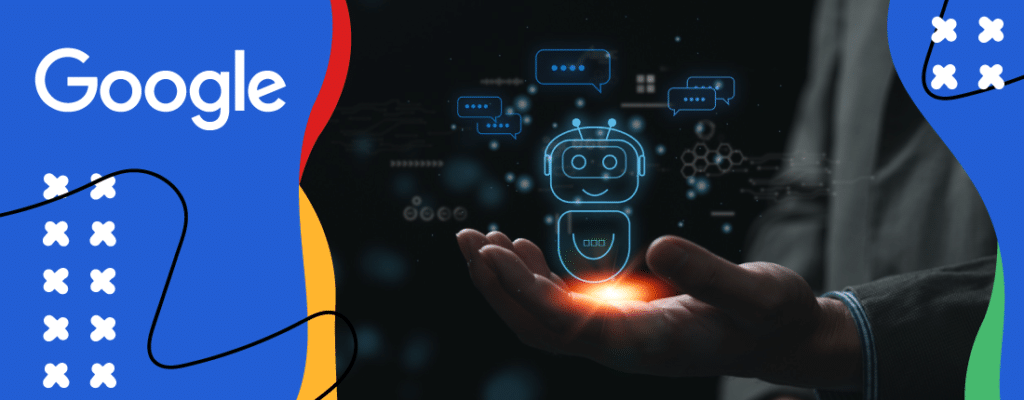ChatGPT has been an undeniable sensation, so it’s no surprise that tech conglomerates everywhere are in a bit of a frenzy to respond. Google’s AI chatbot, known as Bard, was recently announced as a ChatGPT competitor.
Let’s look at what we know about it, what it will mean for the larger tech industry, and how it will impact marketers, brands, and SEO.

In the Testing Phase
Right now, the Bard is available to certain people, referred to by CEO Sundar Pichai as trusted testers, but there’s no exact launch date yet. The actual benefits of Bard are similar to ChatGPT. The tool will pull info from the web, then fine-tune it to provide better responses to countless commands.
The AI language model used for Bard is referred to as LaMDA. This technology isn’t new, but the Google team has revamped it. By adjusting how it works, Pichai has said it’s now streamlined enough to provide faster answers — without sacrificing quality.
Because it requires less power than its original counterpart, it can scale more efficiently to handle high volumes. Google has boasted of this technology’s versatility, easily implemented in chat rooms and search engines alike. Based on ChatGPT’s rapid-fire requests since its debut, Google wants to be ready when the public puts Bard through its paces as soon as it’s on the market.
It didn’t start very well
Despite the fuzz around the announcement, Google actually lost $100 billion in market value on Wednesday after Bard responded to a query in an inaccurate way. The bot reported that the James Webb Space Telescope was the 1st to photograph a planet outside the Solar System, but this feat is from the European Very Large Telescope, in 2004. You can spot the error in the ad below.

This shows us that rushing to launch technologies raises the chance of errors and distorted results. Investors are keen to join the AI trend, but there’s a lot of research to be made before this technology can be largely implemented. Bard is still a very new AI chatbot and Google has a lot of work to do.
Fine-Tuning the Algorithms
During the testing phase, Google will take into account all feedback about the program. They’ll incorporate solutions to any hiccups to meet its standards for quality information in real-world settings. The team has anticipated requests that will try to ‘bait’ the search engine so that it can work around giving incorrect or otherwise biased answers.
Google has promised to reimagine how people explore and interact with information on the web, whether they’re asking for directions or researching market data for a presentation. While this has been a blanket statement referring to its general platform, it’s clear that Bard will be a major part of this pivot.
The Impact of Bard
Despite the proliferation of AI, many companies still struggle with how to make the best use of it. Marketers, brands, and SEO professionals are crushed with data, but the quality of the data might be suspect at best or thoroughly misleading at worst.
Bard has the potential to cut through endless red tape and give professionals clean, correct answers about what prospective customers are looking for and why.
For instance, a content creator for a car company might use Bard to get a deeper understanding of their target demographic. Knowing the most popular keywords can certainly give them insight into what’s important to an audience, but it may not tell them the full story.
So if people are constantly searching for ‘energy efficient cars’ in a certain area, is it because they want to save the environment or because gas prices have gone up again? Would they purchase an electric car if there were more chargers in their area, or are they merely looking to go from 20 miles per gallon to 30?
Bard can potentially take the compilation of questions that it’s asked and show marketers how they can shift their messaging, so it appeals directly to a consumer that will sit up and take notice of it.
It’s an opportunity that also comes with risks. Artificial Intelligence is still expected to require plenty of oversight by humans. The curation, editing, and organization could potentially take more time than if you were to start from scratch.
As of now, the content quality is still lower than handmade content and, therefore, less likely to hold an audience’s attention. If companies start using it en masse, which seems inevitable, it can potentially lower the internet’s overall efficacy.
As the chatter rolls around us, both in real life and online, many of the articles take the same party line: AI is meant to assist professionals and help them do their jobs more effectively, not to replace them entirely.
Does it sound a little like travel agents in the early aughts telling themselves that sites like Priceline and Expedia could never take their jobs? Yes. (Of course, travel agents still exist today, but their numbers are nowhere near what they used to be.)
Ultimately, it’s hard to predict exactly how AI will be used in the real world. However, the potential to reduce waste and increase the quality of content is there. ChatGPT’s capabilities are undeniably valuable, whether it’s for writing code or breaking down complex ideas into digestible explanations.
With Bard, Google is ready to disrupt the impact of ChatGPT with its own version, giving professionals and consumers more options to get answers. From creativity to purpose, brands can leverage all that data to enhance their presence (and profits).
Do you want to continue to be updated with Marketing best practices? I strongly suggest that you subscribe to The Beat, Rock Content’s interactive newsletter. There, you’ll find all the trends that matter in the Digital Marketing landscape. See you there!







